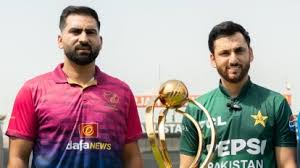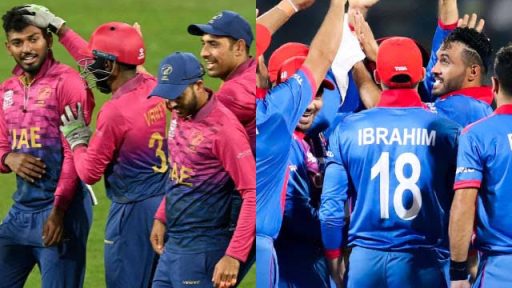
The tri-series in Sharjah moves swiftly into its second contest as Pakistan take on hosts United Arab Emirates on 30 August 2025. After a commanding display in the opening clash against Afghanistan, Pakistan enter this fixture full of confidence and momentum. UAE, meanwhile, face the tough task of regrouping quickly and finding ways to counter a well-rounded side that already has one foot on the accelerator. Sharjah’s lights, flat pitches, and enthusiastic crowd add flavour to a contest that could shape how the remainder of the series unfolds.
Live Streaming Info
Fans can watch Pak vs UAE 2nd T20I live on A Sports HD in Pakistan, while coverage in India will be available on Sony Liv and FanCode. In the USA, Willow TV will carry the broadcast. Match Start Time: 8:30 PM PST | 9:00 PM IST | 3:30 PM GMT.
Team Analysis
Pakistan arrive on the back of a comfortable win over Afghanistan in the series opener. Batting first, they piled up 182 runs thanks to a composed half-century from skipper Salman Ali Agha and a lively cameo from Sahibzada Farhan that lifted the scoring rate in the death overs. With the ball, Haris Rauf produced a fiery spell that dismantled Afghanistan’s chase, ensuring Pakistan claimed victory by 39 runs. The performance underlined the balance in their squad: explosive batting options at the top, solidity in the middle, and wicket-taking threats with the ball across phases.
In this contest, Pakistan’s top order will again be central. Salman Ali Agha has shown the ability to combine patience with power, while the likes of Mohammad Haris and Farhan can accelerate at will. The middle order, featuring Faheem Ashraf and Mohammad Nawaz, offers both depth and flexibility, allowing Pakistan to adapt whether setting a total or chasing. Their bowling, spearheaded by Shaheen Afridi’s swing and Rauf’s pace, is complemented by Hasan Ali’s variations and Abrar Ahmed’s spin through the middle overs. Collectively, it is a lineup built to dominate on Sharjah’s batting-friendly strip.
UAE step into the spotlight with the challenge of taming Pakistan’s momentum while harnessing the familiarity of home conditions. Skipper Muhammad Waseem remains their most reliable source of runs at the top, blending power with experience in T20 cricket. Alongside him, Alishan Sharafu is expected to shoulder responsibility in the middle overs, tasked with maintaining tempo against Pakistan’s varied attack. The middle and lower order will rely on enterprise from young talents, while seasoned players like Basil Hameed bring much-needed stability.
On the bowling front, UAE turn to Junaid Siddique and Zahoor Khan to strike early blows and limit Pakistan’s run flow in the powerplay. Their spin department, led by Aayan Khan and Karthik Meiyappan, holds the key to restraining Pakistan’s aggressive middle order, particularly if the pitch begins to slow under the lights. For UAE, every spell must be disciplined, as Pakistan’s batting depth leaves little margin for error.
Match Insights and Conclusion
The battle in Sharjah is set to test both sides in contrasting ways. Pakistan’s challenge lies in maintaining consistency, ensuring their batting unit doesn’t rely solely on cameos but builds partnerships that can stretch into match-winning contributions. For UAE, survival in the powerplay against Afridi and Rauf will be crucial, as early wickets could derail their chase or leave them vulnerable when setting a total. Conditions in Sharjah traditionally favour batters, but as the night wears on, spinners and cutters can extract grip, making strike rotation and placement vital components of success.
With Pakistan’s depth, balance, and form, they begin this fixture as overwhelming favourites. Yet UAE, buoyed by local support and familiarity with conditions, cannot be discounted entirely. An upset here would not only re-energise the hosts but also open up the tri-series, injecting unpredictability into the days ahead. For Pakistan, another win would cement early dominance and send a strong message before tougher challenges later in the tournament. Expect an evening of fast runs, tactical adjustments, and pressure moments as the second act of this Sharjah tri-series unfolds.




